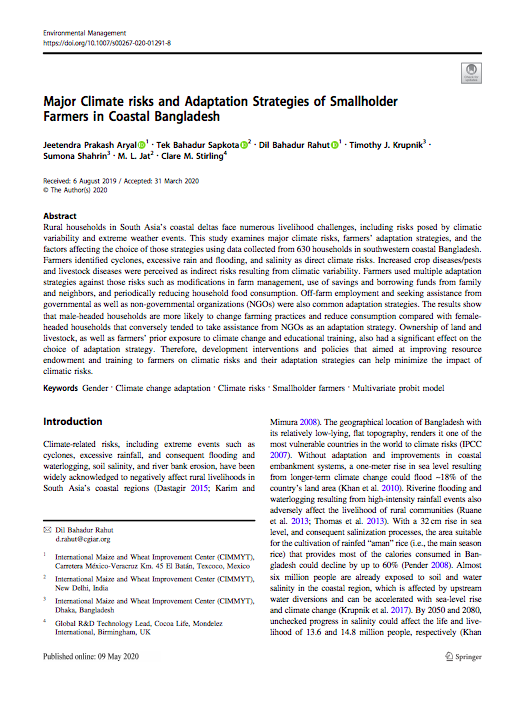Major climate risks and adaptation strategies of smallholder farmers in coastal Bangladesh

ABSTRACT
Rural households in South Asia’s coastal deltas face numerous livelihood challenges, including risks posed by climatic variability and extreme weather events. This study examines major climate risks, farmers’ adaptation strategies, and the factors affecting the choice of those strategies using data collected from 630 households in southwestern coastal Bangladesh.
Farmers identified cyclones, excessive rain and flooding, and salinity as direct climate risks. Increased crop diseases/pests and livestock diseases were perceived as indirect risks resulting from climatic variability. Farmers used multiple adaptation strategies against those risks such as modifications in farm management, use of savings and borrowing funds from family and neighbors, and periodically reducing household food consumption. Off-farm employment and seeking assistance from governmental as well as non-governmental organizations (NGOs) were also common adaptation strategies.
The results show that male-headed households are more likely to change farming practices and reduce consumption compared with female-headed households that conversely tended to take assistance from NGOs as an adaptation strategy. Ownership of land and livestock, as well as farmers’ prior exposure to climate change and educational training, also had a significant effect on the choice of adaptation strategy. Therefore, development interventions and policies that aimed at improving resource endowment and training to farmers on climatic risks and their adaptation strategies can help minimize the impact of climatic risks.